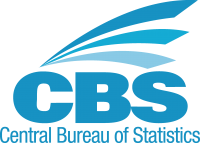How is a sample drawn?
CBS Curaçao uses a sampling frame from a file of addresses / building points. This happens with household surveys, eg the Labor Force Survey.
A sample is always drawn from this sampling frame. This sampling is a random procedure that causes random selection. Random in this case means that no element in the target population has received preferential treatment. This is called a probability sample. Each element has a positive chance of ending up in the sample and all those opportunities must be known. In this way it is guaranteed that every household is treated in the same way to avoid bias in the sample.
It is also important to determine the size of the sample. Usually this is done by looking at what precision of the estimate you want to have. As a rule, the larger the sample, the more precise the estimate. So first the precision (with a certain reliability) is established and then the corresponding sample size can be calculated. Each year, the sampling frame is redefined and the precision and size of the sample are determined. Year after year, if possible, we try not to contact the same address again within 6 months.
